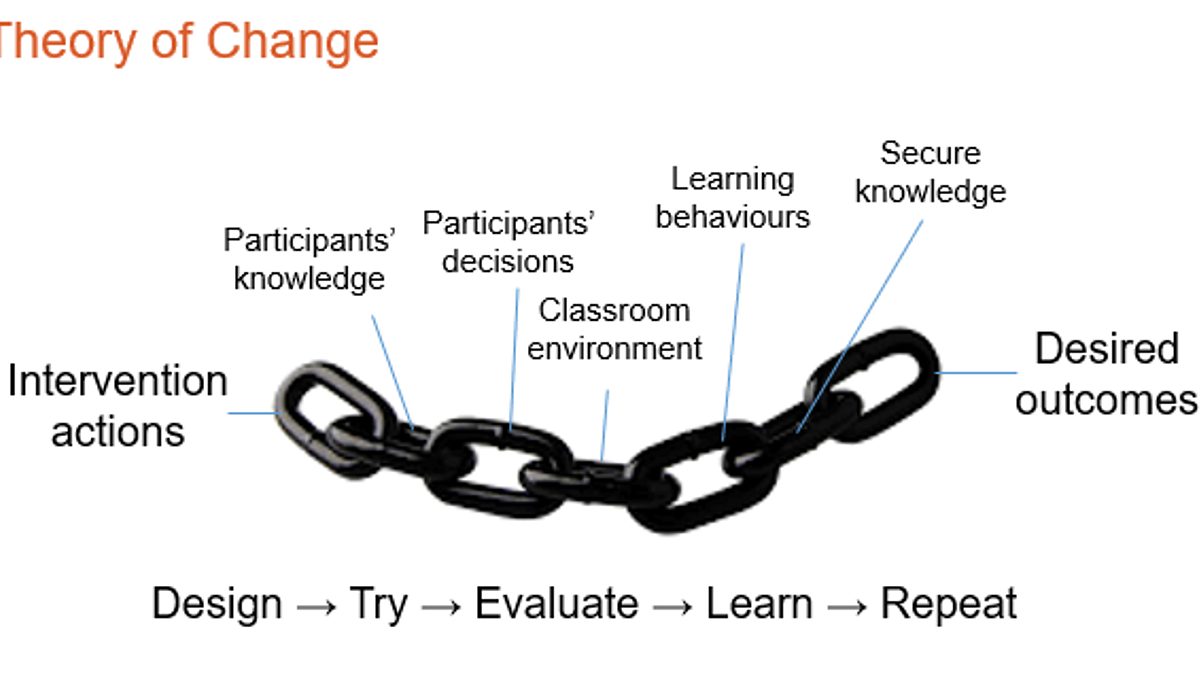

Research School Network: From theory to practice How we make sure the theory shared in our training programmes becomes a reality in the classrooms of our participants.
—
From theory to practice
How we make sure the theory shared in our training programmes becomes a reality in the classrooms of our participants.
Share on:

by Durrington Research School
on the
As we at Durrington look forward to starting our fifth year as a research school, it is a good time to reflect on some of the things we have learnt along the way. For example: always consider your background before starting a remote training session, the quality of the sandwiches on our training days really does matter, and turning the evidence-based principles and strategies into changes in the habitual practice of teachers is really hard.
We have written a lot on these pages about implementation, and how the science surrounding it is hugely useful to school leaders looking to make a sustained change. However, this also applies to the training we deliver. We do not want it merely to be the sandwiches that leave an impression, the purpose of our training is to lead to substantive and permanent changes as otherwise there is little point in the training taking place. For those of you considering your teaching development plan for next year, you can find details of all the training we are offering next year here.
The difficulties in turning theory into practice have become apparent to us over time. Certainly in year one as a research school we struggled to see how we could ensure that those that attended took the principles that we had shared, and embedded them in their various settings. Over time though, we have become more attuned to this tension and through our own experience, but crucially some key models of planning, thinking and facilitation, have designed our training to be a more reliable lever for change.
As I alluded to, the implementation guidance report published by the EEF is a vital tool in this. However, I want to focus here on something referred to as the theory of change. It is exemplified by this image:

As you can see, the theory of change essentially articulates what the important activities are that will help to secure positive changes. It is a process of thinking that takes first, us as trainers during the design phase, and then the participants through the steps, from the principles of the intervention to the ultimate desired outcomes. These points are connected by a chain of check points relating to both practitioner and pupil that allow these interventions to be realised as outcomes. Should the chain be broken by one of these steps being missed, then the change will in likelihood fail to materialise. By setting this out early, and returning to it regularly, the idea is that the chance of this is minimised, and therefore the potential for lasting change being achieved is increased.
To exemplify this further this is the theory of change model specific to the Memory and Metacognition programme that I ran with James Crane this year:

This then is the theory of change contextualised to this particular three-day (or this year 9 online-module) training programme. As you can see the model moves from exploration, to more specific training, and then finally to the desired outcomes. Some of the steps on the former image would fit in between these sections. This worked to both keep us as trainers on course with where we were going but also the participants rooted in the change they were aiming for.
The obvious next question is has this made any measurable difference. One example I can give would be a primary school that completed the course this year. As part of our training we now offer bespoke wrap around support to our participants. This means that as well as attending the sessions, the school leaders involved could also have time to speak to one of the trainer delivering the course in order to fully contextualise the content and start to build towards implementation.
I was working with the primary school in question here throughout the course, and by the end of the year the headteacher had created a full implementation plan that showed real fidelity to the principles the course had contained. I was then able to advise further in terms of shaping the plan to give it best chance of becoming reality and achieving those desired outcomes. I am also looking forward to visiting the school in September to help deliver some of the initial training with their teachers.
Looking back to year one training, the difference would have been that without the clarity on the process of change we were attempting to achieve, that much of this would have been left to chance. It may still have happened in the school, but also it may not have.
Ultimately then, we are committed to making sure our training has the highest possible impact. As a research school we are involved in a wide variety of training covering a number of projects, and each will have its own theory of change to follow. If you wish to be part of that please follow this link and get in touch.
Chris Runeckles is assistant director of Durrington Research School and is assistant headteacher at Durrington High School. He tweets @chris_runeckles
More from the Durrington Research School
Show all news

The Evidence Base behind Attendance Interventions
The importance of attendance means that there is a growing demand for a review of the research into attendance interventions.

Metacognition and self-regulation in geography
Head of geography Sam Atkins explains how he has been helping students develop their metacognitive regulation .